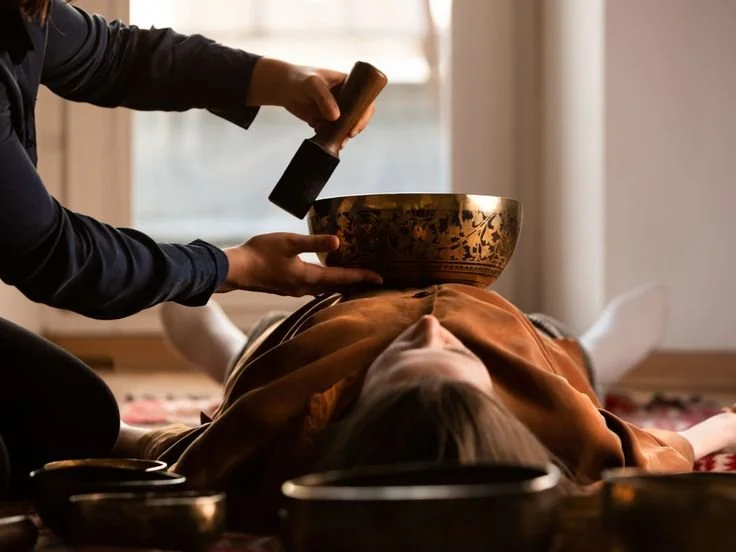How Sound Baths & Frequency Healing Are Gaining Scientific Backing
Sound baths—immersive sessions with gongs, singing bowls, chimes, or tuning forks—are becoming mainstream in wellness. Meanwhile, medical and psychological studies reveal they may do more than sound nice. Therefore, it's worth exploring how modern science explains and supports their benefits.
What Exactly Is a Sound Bath?
Firstly, participants typically lie or sit comfortably while instruments are played around them.
Also, the goal is to enter a relaxed mental state through sustained emotional and physiological resonance.
Moreover, this experience can last 15 to 60 minutes—enough to trigger deep relaxation.
Mechanisms That Science Identifies
Brainwave Entrainment & Frequencies
Secondly, studies show that certain frequencies—especially theta (4–8 Hz) and alpha (8–12 Hz)—sync brain activity with calming states.
Also, binaural beats, created by playing slightly different tones in each ear, can influence brainwaves and encourage relaxation.
Hence, sound healing can guide the mind into meditative states without active effort.
Vagus Nerve & Autonomic Balance
Furthermore, sound experiences may stimulate the vagus nerve, triggering the parasympathetic system—our rest-and-digest mode.
Consequently, this reduces heart rate and enhances calm.
Physiological Relaxation
Moreover, studies found that sound healing can reduce cortisol, blood pressure, and pain—while improving heart-rate variability (HRV) .
Additionally, early participants report less stress, fatigue, confusion, and anger after sessions.
Mental Health Benefits
Meanwhile, multiple small trials link sound baths to lower anxiety and depression.
For example, a 2022 singing bowl study showed gains in spiritual well-being and reduced tension, sometimes after just one session.
However, research remains limited and often observational, calling for more controlled trials.
Pain & Sleep Improvements
Additionally, participants report meaningful reductions in chronic pain—from arthritis to post‑surgery discomfort—after sound sessions.
Also, low frequencies, like delta waves, appear to support slow-wave sleep—helping those with insomnia.
Emerging Clinical Applications
Furthermore, applications such as vibroacoustic therapy use low-frequency vibrations through chairs or mats.
For instance, 40 Hz tones are under study to aid cerebral palsy, PTSD, hypertension, and memory function .
Thus, sound-based interventions are moving from spa to clinical settings.
Who Gains the Most
Meditation beginners or busy minds often find sound baths easier to relax into than traditional meditation.
Patients preparing for surgery or high-stress events can benefit—music before surgery reduced anxiety and stabilized vitals in randomized studies.
Those with chronic pain or insomnia report relief and better rest after regular sessions.
Real-World Experience & Testimonials
“I felt noticeable relief in my knee pain after a gong bath... it was a powerful sensory journey.”
“Sound meditation produced more relaxation than silent meditation and reduced fatigue.”
These reports suggest both emotional and physical benefits, even if individual results vary.
Key Considerations
However, sound baths are complementary—not cures.
Also, sensory-sensitive individuals or those with PTSD may find sessions overwhelming.
Therefore, starting small and consulting a professional is wise.
Tips for Trying a Sound Bath
Choose live or quality recorded sessions—instruments like high-quality bowls or gongs matter.
Prepare to relax—lie down comfortably with a blanket to minimize distractions.
Set intentions quietly—for stress relief, sleep, or focus.
Allow emotions to arise—many find catharsis with no effort required.
Reflect afterward—note changes in mood, pain, or clarity post-session.
Final Thoughts
Sound baths and frequency healing are gaining scientific credibility.
Through brainwave entrainment, vagal stimulation, and physiological regulation, they reduce stress, ease pain, and promote mental calm.
Although more research is needed, current studies and testimonials are promising.
Ultimately, sound-based practices may offer a soothing, low-risk addition to wellness and therapeutic routines.

